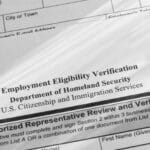Reading Time: 3 minutes
By: Heather Campbell, CIA
Many banks seek guidance for what happens to the Designation of Exempt Person (DOEP) forms following mergers/acquisitions (M&A). Compiled below are some tidbits of information to help decide upon what needs to be done with regards to the bank’s Bank Secrecy Act (BSA)/Anti-money Laundering (AML) procedures related to exempt customers. First of all, the “surviving” bank needs to understand the importance of two common dates used when discussing mergers and acquisitions. The two dates include the legal date and the software date.- Legal Date – is the actual date of the merger/acquisition of the banks.
- Software Date – is the date the vendor systems unite, when all locations use the same “core” vendor system and in some cases the BSA/AML software.
- DOEP forms from the acquired bank cease to exist as of the legal date.
- The surviving bank has 60 days to update and re-submit the “acquired” DOEP forms.
- Conduct a rolling 12 month, “annual”, review of the acquired DOEPs.
- Determine the acquired DOEPs meet the exemption criteria/risk profile of your bank.
- File and submit an initial DOEP form.
- The surviving bank may forgo re-submitting a new DOEP form for mutual corporate exemptions.
- The acquired bank and the surviving bank both have a DOEP form for a corporate customer, i.e. Dollar General; therefore, both exemptions have the same TIN.
- The surviving bank will conduct a rolling 12 month, “annual”, review for all related customer accounts designated as exempt at both banks.
- If the customer still qualifies to be exempt, the bank can document all exempt account numbers on the review and maintain the surviving bank’s DOEP form.
Quick Reference Summary to the Guidance
Phase I Customers- Banks operating in the U.S., Federal, state, local, or inter-state governmental departments, agencies, or authorities are considered Phase I customers and are automatically exempt from filing CTRS.
- Entities and subsidiaries (minimum 51% owned) listed on the major national stock exchanges are Phase I customers and require a DOEP form to be filed and an annual review be conducted.
- Non-listed businesses and Payroll customers (a firm, doing business in the United States, that regularly withdraws more than $10,000 in order to pay it’s United States employees in currency) require a DOEP form, annual review, five or more >$10,000 transactions in a rolling 12 months, and a two month relationship with the bank to maintain exemption status.
- Non-listed businesses must not have more than 50% of gross revenue derived from an ineligible activity to maintain exemption status.
- If a Phase II customer reorganizes the business, an annual review should be completed to determine exemption status and an updated DOEP form should be submitted.
- If a Phase II customer does not maintain the exemption status requirements, the bank should document the reasons for revoking the status. The bank is not required to file the exemption status through FinCEN, but it does benefit the bank and users of BSA data when the revocation is filed.
- The bank is not required to back file any CTRs for a Phase II customer who is determined to not be exempt during the timely completion of the annual review.
- The acquired bank should review all BSA related reports and correct any outstanding issues prior to the merger.
- All Currency Transaction Reports (CTRs) for non-exempt customers will need to be submitted based on the aggregated daily transactions of all locations (new and old) as of the legal date through the software date. The surviving bank will need to use the large dollar reports from both locations to aggregate the transactions by TIN and file CTRs under the surviving bank’s name.
- Continuing SARs will be filed by the surviving bank, but the first few lines of the narrative on the first submission should include a summary of merger details, including the acquired bank’s name and the merger date.
- Verify the Research, Statistics, Supervision, and Discount Number (RSSD ID) on the acquired bank reflect the surviving bank’s name.
- After the software date, contact the support center for BSA E-Filing to ask that they merge the profiles of the acquired bank with the surviving bank. https://bsaefiling.fincen.treas.gov/Help.html








